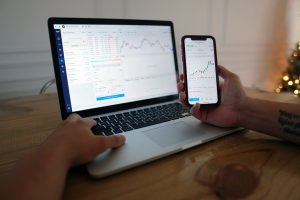As a beginner or experienced trader, you may have heard of the term “autotrader” in forex trading. An autotrader is a trading tool that allows traders to automate their trading strategies, saving them time and effort while increasing efficiency. In this article, we will walk you through how to make an autotrader forex, step by step.
Step 1: Choose a Trading Platform
The first step in creating an autotrader forex is to choose a trading platform that supports automated trading. The most popular trading platforms for automated trading are MetaTrader 4 (MT4) and MetaTrader 5 (MT5). These platforms allow traders to develop and implement automated trading strategies using programming languages such as MQL4 and MQL5.
Step 2: Develop Your Trading Strategy
Once you have chosen your trading platform, the next step is to develop your trading strategy. Your trading strategy should be based on technical analysis, fundamental analysis, or a combination of both. Technical analysis involves analyzing charts and indicators to identify trading opportunities, while fundamental analysis involves analyzing economic news and events to identify trading opportunities.
When developing your trading strategy, you should consider the following:
– Entry and exit points
– Stop-loss and take-profit levels
– Risk management
– Trading timeframes
– Trading instruments
Step 3: Write Your Trading Algorithm
After developing your trading strategy, the next step is to write your trading algorithm. A trading algorithm is a set of rules that dictate when to enter and exit trades based on your trading strategy. You can write your trading algorithm using programming languages such as MQL4 and MQL5.
When writing your trading algorithm, you should consider the following:
– Trading rules
– Trading conditions
– Trading logic
– Risk management
Step 4: Backtest Your Trading Algorithm
Once you have written your trading algorithm, the next step is to backtest it. Backtesting involves testing your trading algorithm on historical data to see how it would have performed in the past. Backtesting will help you identify any flaws or weaknesses in your trading algorithm and refine it before deploying it in real-time trading.
When backtesting your trading algorithm, you should consider the following:
– Historical data
– Trading costs (such as spreads and commissions)
– Trading conditions (such as slippage and order execution speed)
– Trading strategies (such as trend-following and mean-reversion)
Step 5: Deploy Your Trading Algorithm
After backtesting your trading algorithm and refining it, the next step is to deploy it in real-time trading. To deploy your trading algorithm, you need to create an Expert Advisor (EA) or a robot that will run your trading algorithm on your chosen trading platform.
When deploying your trading algorithm, you should consider the following:
– Testing your EA on a demo account before deploying it on a live account
– Monitoring your EA’s performance regularly and making adjustments as needed
– Reviewing your EA’s performance periodically and making updates as needed
Conclusion
Making an autotrader forex requires a lot of time, effort, and knowledge. However, by following the steps outlined in this article, you can develop and deploy an autotrader that will automate your trading strategy and increase your efficiency. Remember to backtest your trading algorithm thoroughly and monitor your EA’s performance regularly to ensure its effectiveness. Happy trading!





